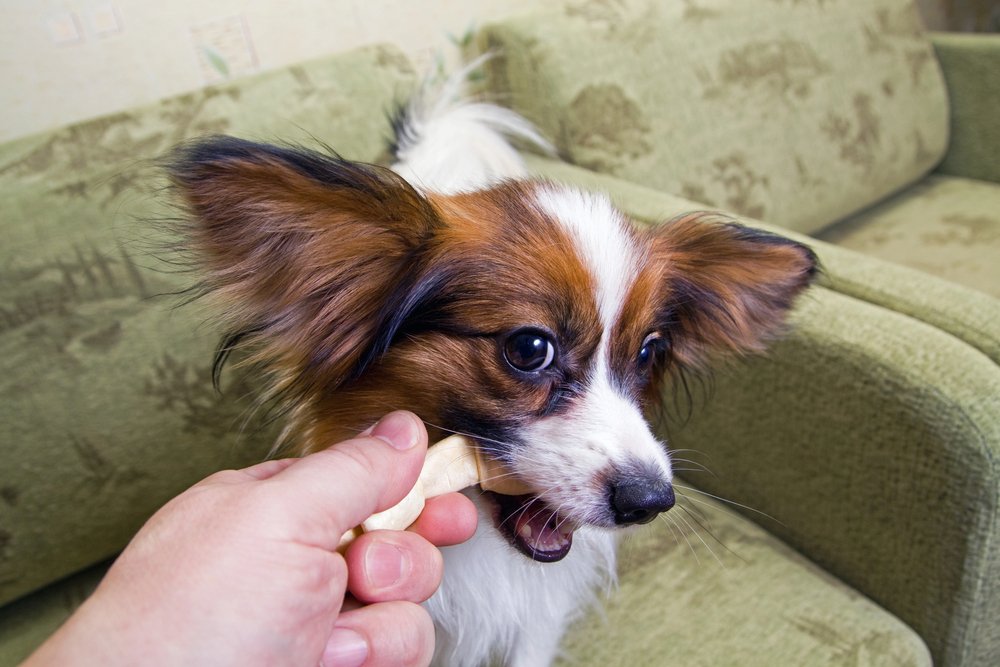Positive reinforcement training is a scientifically-backed method of dog training that emphasizes rewarding desired behaviors rather than punishing undesirable ones. This approach fosters a harmonious relationship between you and your dog by encouraging cooperation and confidence rather than fear. Positive reinforcement is not only effective but also humane, making it a popular choice among pet owners and trainers alike.
The Science Behind Positive Reinforcement

Positive reinforcement is rooted in the principles of operant conditioning, a concept in behavioral psychology developed by B.F. Skinner. This approach involves introducing a stimulus (a reward, such as treats, praise, or play) immediately after a desired behavior. The reinforcement increases the likelihood that the behavior will occur again. Studies have shown that animals learn better when they are motivated by positive outcomes rather than the fear of negative consequences.
The Benefits of Positive Reinforcement

Positive reinforcement helps develop a strong bond of trust and understanding between you and your dog. Dogs trained with positive reinforcement tend to be more confident and less anxious. They are more willing to engage in training sessions and are healthier mentally and emotionally. Moreover, this training technique reduces aggression, as the dog is not subjected to fear-inducing punishment.
The Core Elements of Positive Reinforcement Training

Positive reinforcement training involves clear communication, consistency, and patience. The key components include timing, consistency, and reward value. A reward should be given immediately after the desired behavior to effectively associate the behavior with the positive outcome. Consistency helps reinforce the learning process, while the reward must be of value to the dog, whether it’s a favorite treat, toy, or form of praise.
Getting Started with Positive Reinforcement

Begin your positive reinforcement training by clearly identifying the behaviors you want to encourage. These can range from basic commands like “sit” and “stay” to more complex tasks like fetching. Make sure to have a selection of high-value rewards ready, tailored to what your dog enjoys most. This sets the stage for an enjoyable and productive training session.
Common Techniques in Positive Reinforcement

Clicker training is a popular technique used in positive reinforcement. It involves using a small device that makes a clicking sound to mark desired behaviors. The sound is followed by a treat, helping dogs quickly associate the behavior with the reward. Another technique involves verbal markers, where words like “yes” or “good” are used to signal correct behavior before rewarding.
Overcoming Challenges in Training

Training a dog using positive reinforcement can sometimes be challenging, especially when dealing with ingrained habits or specific behavioral issues. The key is to remain patient and consistent, adapting your approach to suit your dog’s individual needs. If progress stalls, revisiting basic commands and rewarding small successes can help regain momentum.
Avoiding Common Mistakes

In positive reinforcement training, timing is critical. Delayed rewards can confuse your dog and weaken the learning process. Additionally, over-relying on treats may lead to dependency, so it’s important to gradually introduce other forms of rewards like toys and verbal praise. Avoid inconsistency, as it may lead to confusion and undermine your dog’s progress.
The Role of Consistency and Patience

Consistency is the cornerstone of effective training. Dogs thrive in environments where they understand the expectations. Each member of the household should follow the same training protocols and commands to prevent confusion. Patience is equally vital; remember that learning takes time, and setbacks are a natural part of the process. Celebrate small victories to keep both you and your dog motivated.
Enhancing the Bond with Your Dog

Positive reinforcement training is more than just a teaching method; it’s an opportunity to strengthen the bond with your dog. Each training session should be a positive interaction, filled with joy and collaboration. This fosters mutual respect and trust, laying a foundation for a happy and fulfilling relationship with your dog.
Long-term Benefits of Positive Reinforcement

The benefits of positive reinforcement extend beyond immediate behavioral improvements. Dogs trained with this method often retain their learned behaviors better and are more eager to engage in continued learning. This method contributes to a more balanced and happier canine, ultimately resulting in a healthier, lifelong relationship with your pet.
The Path to a Happy Dog

Positive reinforcement training is a compassionate and effective way to raise a well-behaved and happy dog. By focusing on rewarding desired behaviors and fostering an environment of trust and understanding, you create a positive learning experience for your pet. Embrace this kind training method to nurture a joyful and harmonious partnership with your beloved furry friend.

Esther is from India; the heartbeat of South Asia, holding a Master’s degree in Zoology and a postgraduate diploma in Animal Welfare. Her enthusiasm for animal welfare drives her passion and dedication to working for animals, ensuring their well-being, and advocating for their rights. With a solid academic background and hands-on experience, she is committed to making a positive impact in the field of animal welfare. In her free time, she enjoys embroidery and sewing. As a Chennaite from Tamil Nadu, Esther loves Bharathanatyam, an Indian classical dance form.






